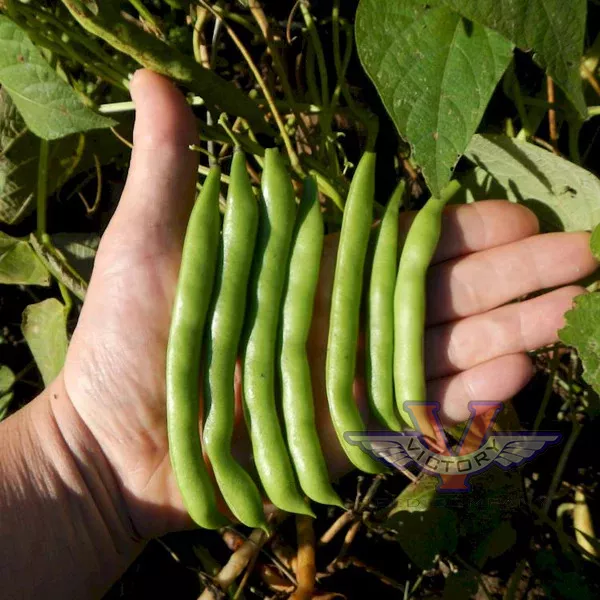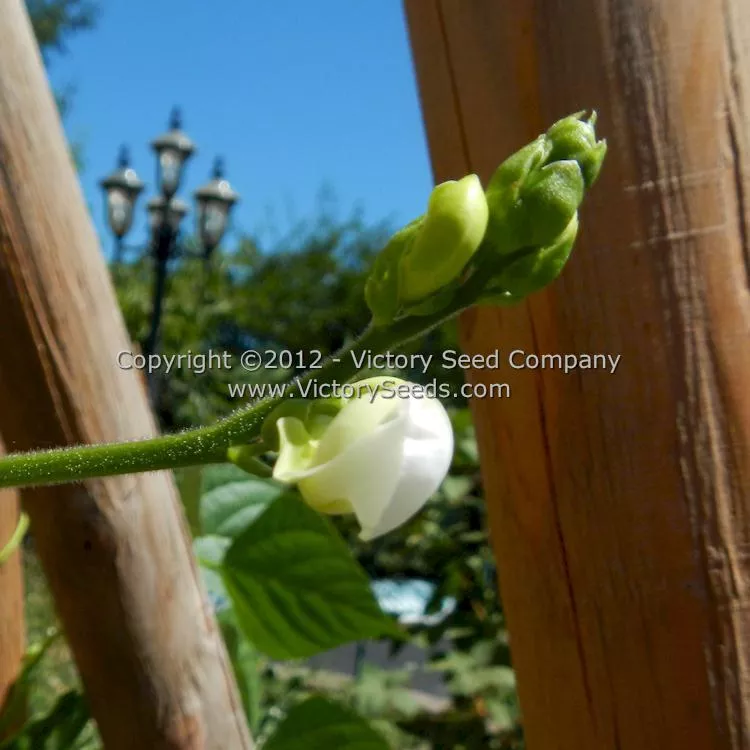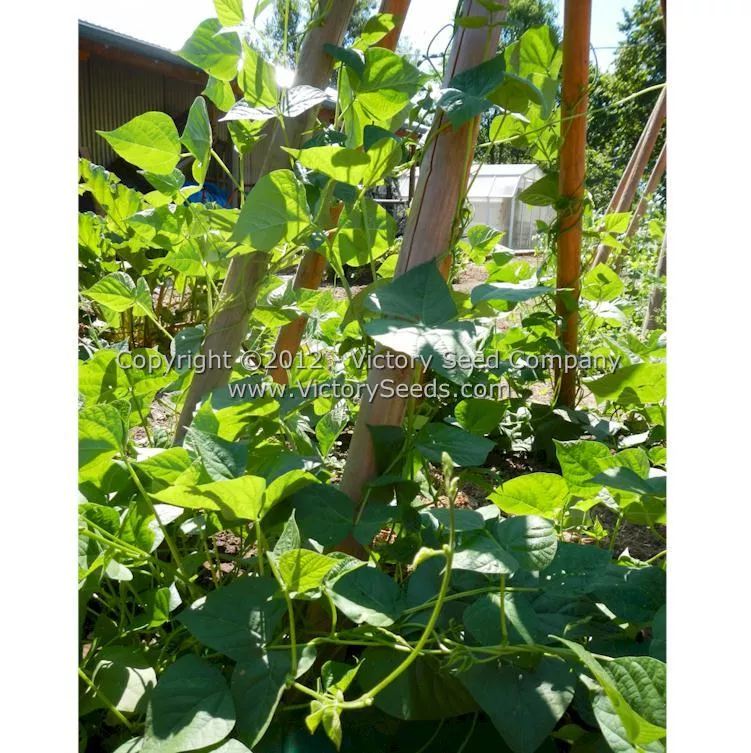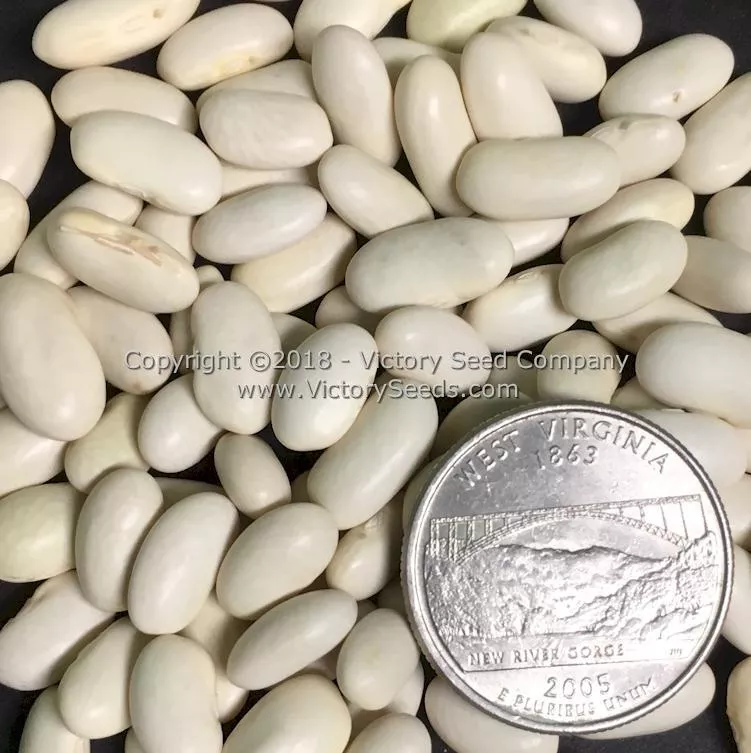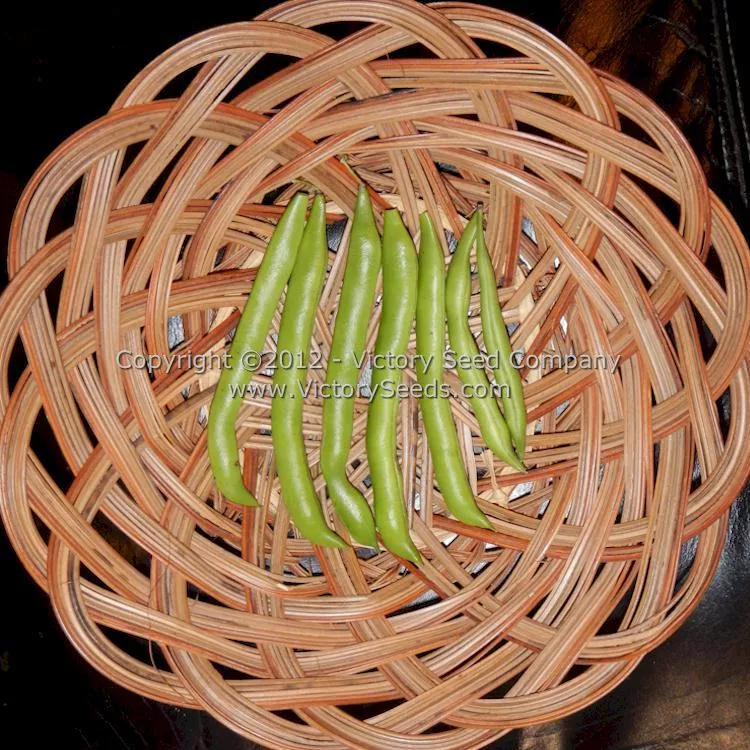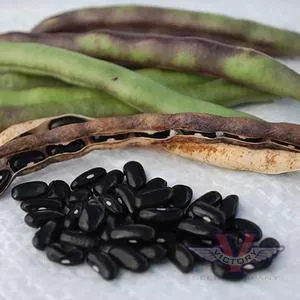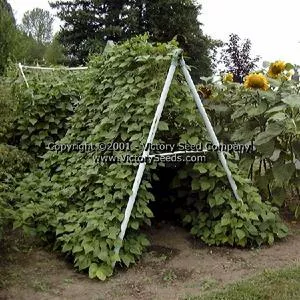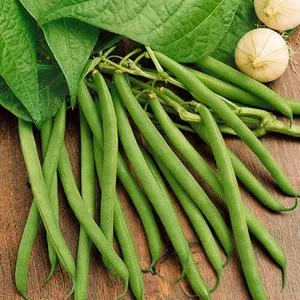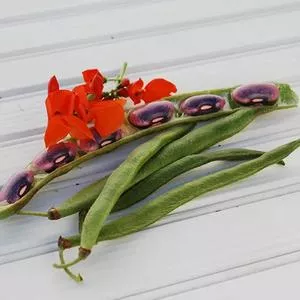




Blue Lake FM-1K Pole Green Garden Bean
Price: $3.45
SKU: 30308611'Blue Lake FM-1K', also known as 'Stringless Blue Lake FM-1K', is one of many in a series of Blue Lake-type beans that were introduced in the middle of the twentieth century. Its pods are stringless when young and tender, dark green in color, round in cross section, tasty, reach about six inches in length, and have white seeds. They can be enjoyed fresh as snap or shell beans, canned, frozen or dried. The plants are vigorous, climb well, and are productive. It is a BCMV resistant strain.
Bred by the Ferry-Morse Seed Company of Mountain View, California, 'Stringless Blue Lake FM-1K', was selected from a stabilized cross between their 'Morse's Pole 65' pole bean and standard Blue Lake-type beans and introduced in 1959. About 95 seeds per ounce.
Don’t bother trying to get an early start with beans – you’ll waste a lot of seed! Beans are a tender vegetable and you should not plant them until all danger of frost has passed and the soil remains above 65ºF. Sow seeds 1½ inches deep, every two to three inches. As they make efficient use of vertical space, provide a trellis. Use string or twine as wire will heat and burn the tender vines.
Pick the pods while young as they are more tender and succulent and less likely to be stringy. For seed saving, allow the pods to fully mature and dry completely out on the vines.
- "Vegetable Cultivar Descriptions for North America – Bean, Green (A-M), Lists 1-27 Combined," Edited by James Nienhuis and Michell E. Sass, Department of Horticulture, University of Wisconsin, Madison, WI 53706 and James R. Myers, Department of Horticulture, Oregon State University, Corvallis, OR 97331-7304.
Customer Reviews:
By Randy J. (Indianapolis, IN) on November 15, 2024
We grew Blue Lake FM-1K beans twice in the 2024 season on our cattle panel trellis. Only used 5-seeds per side and they went crazy! The beans grew large and delicious, I had to pick them daily.
I first started them indoors then transplanted early spring, after the first batch played out we re-direct seeded with 100% germination and harvested until the end of October. Very impressed with this variety after canning for the year, eating, and giving a lot away to friends & family. They will definitely be re-planted next year but due to demand I'll start another trellis or two..
"We highly recommend Blue Lake FM-1K Pole Beans" you will love them too...
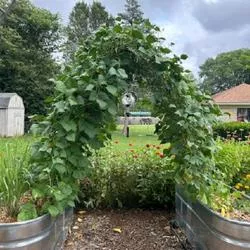
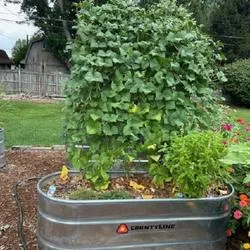
By Paula Beach on January 13, 2016
This bean has excellent flavor and it's very prolific. I have an eight foot fence around my garden and this topped that fence easily, so be prepared to bring out the big bean poles. It does attract Japanese beetles however.
By Michael Rundquist on January 6, 2016
I grew these as part of a Three Sister Garden. They grew slow at first because the corn over took them but as the corn started to die back they took off. They made great young green beans for canning and a ton of nice size white dry beans. I got truly amazing yields. Yielding more beans than corn and I had a great corn yield this year too.

